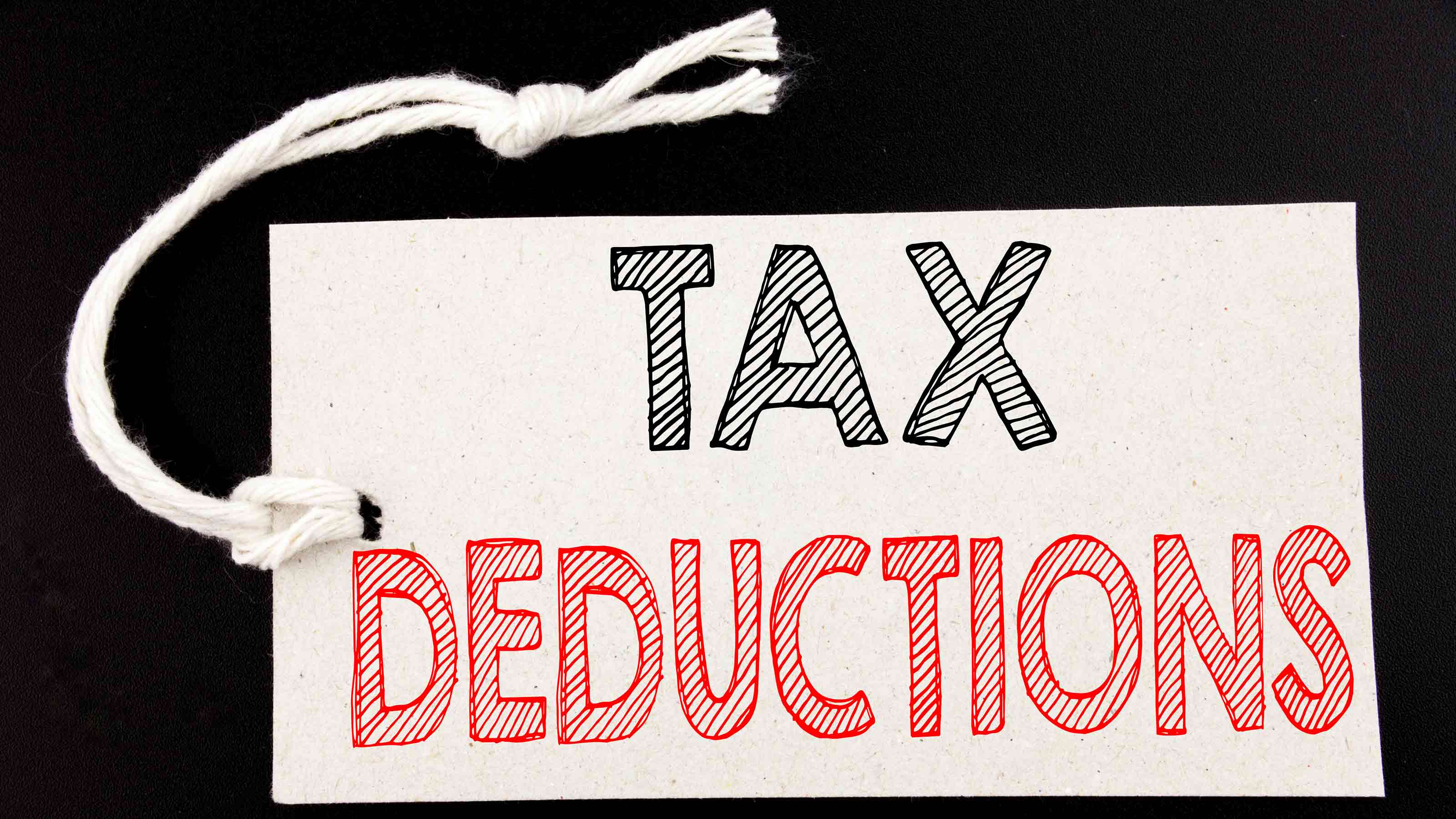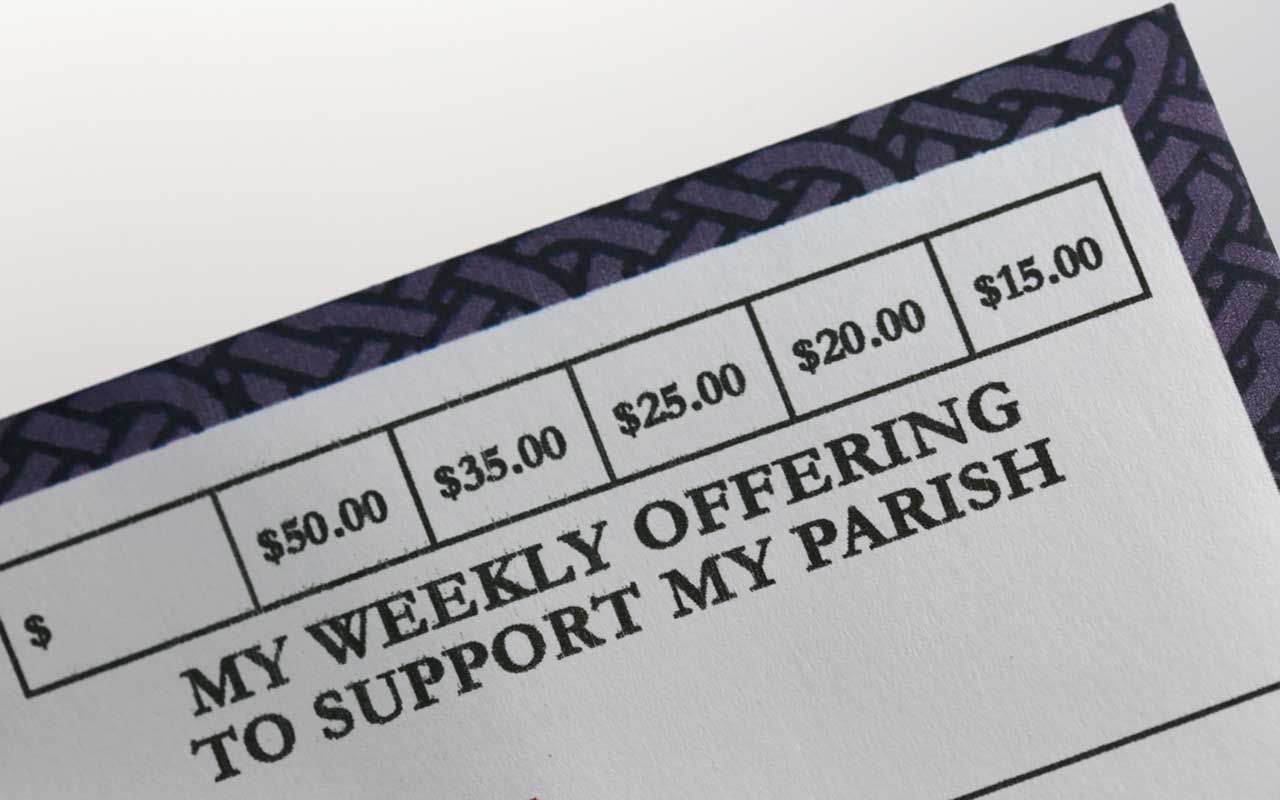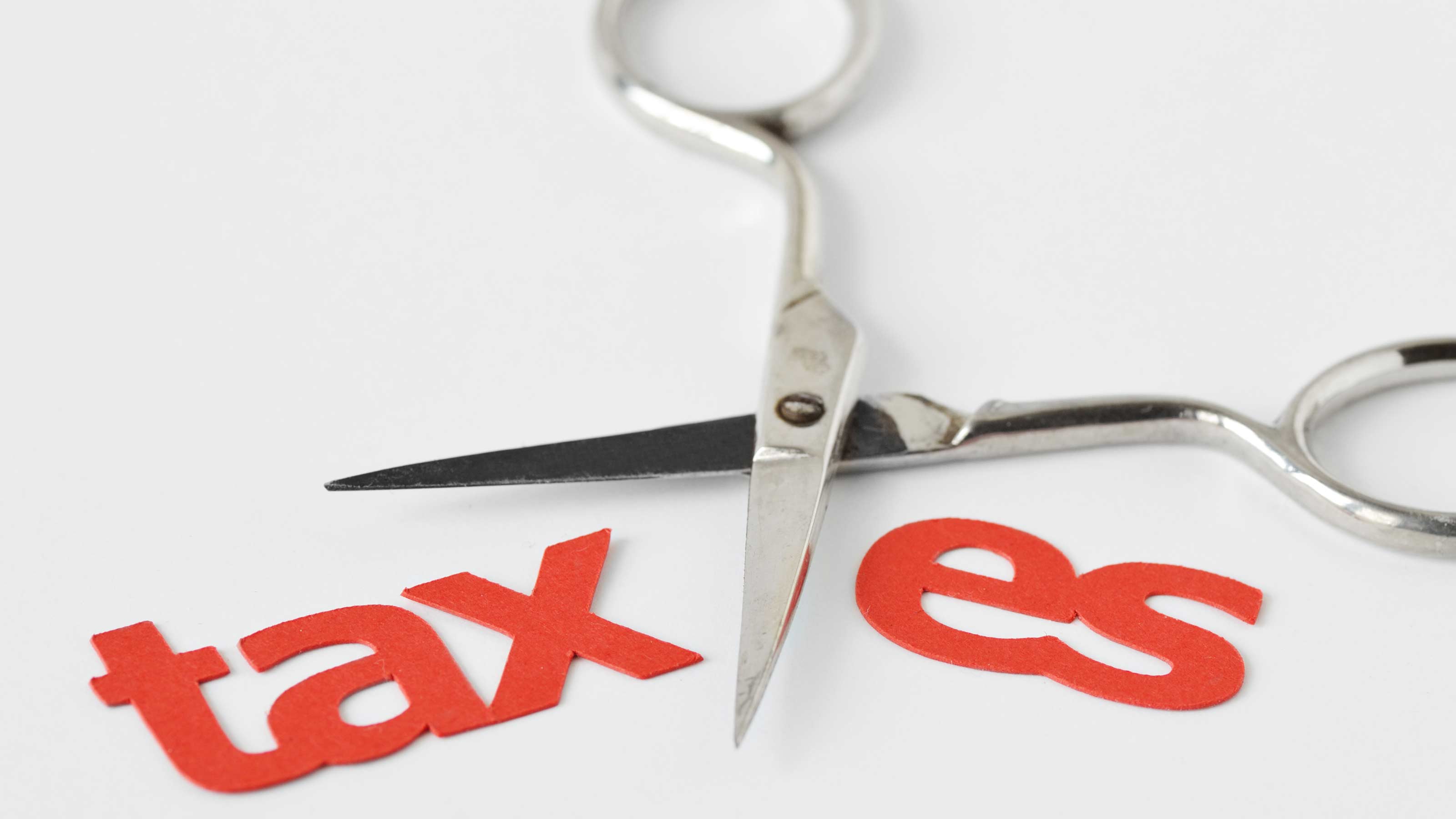"Above-the-Line" Deductions for Your 2021 Tax Return
If, like most people, you claim the standard deduction instead of itemized deductions on your return, there are still many other tax deductions available that could save you a lot of money.

Relatively few Americans itemize deductions on their tax return. You can either claim the standard deduction or itemized deductions on your return — but not both. And, of course, you always want to pick the higher amount, which is the standard deduction for the vast majority of people.
That means most Americans can't claim some very well-known tax breaks. No deduction for medical expenses. Zero tax savings for mortgage interest payments. Nothing for state and local taxes, either. If you claim the standard deduction, you can't claim any of these popular write-offs.
But there are several other popular tax deductions that people taking the standard deduction can still claim on their tax return. Most of these so-called "above-the-line" deductions have no income limits, so anybody can claim them on Schedule 1 of their Form 1040. Plus, because these deductions will lower your adjusted gross income (AGI), you may be able to claim other tax breaks that have AGI-based income limits. (They're called "above-the-line" deductions because you record them on the 1040 form above the line showing your AGI.) So, if you're claiming the standard deduction and want to lower your tax bill, keep reading to see if you qualify for any of these common money-saving write-offs.

IRA Deduction
Contributing to a traditional individual retirement account (IRA) is a win-win move that lets you boost your retirement savings and trim your tax bill at the same time (assuming you have earned income). For 2021, the contribution limit is $6,000 ($7,000 if you're 50 or older) or your taxable compensation for the year, whichever is less. Plus, if you (and your spouse, if you're married) don't have a retirement plan at work, every dollar of that can be knocked off your taxable income. If you're covered by a retirement plan at the office (or your spouse is) then that deduction might be limited if your income exceeds certain levels. Most people have until April 18, 2022, to make deductible IRA contributions for the 2021 tax year (residents of Maine and Massachusetts have until April 19, and certain natural disaster victims have until May 16).
For 2022, the contribution limits remain the same as they were for 2021. However, the income limits for the deduction are slightly higher. You can make deductible IRA contributions for the 2022 tax year until April 18, 2023.

HSA and Archer MSA Deductions
Are you funding a health savings account (HSA) in conjunction with a high-deductible health plan? If so, that's a smart move.
You get an above-the-line deduction for contributions to the HSA, assuming you made them with after-tax money. If you contribute pre-tax funds through payroll deduction on the job, there's no double-dipping — so no write off. In either case, you need to file a Form 8889 with your return.
The maximum contribution for 2021 was $7,200 for family coverage and $3,600 if you're an individual (they're $7,300 and $3,650, respectively, for 2022). If you're 55 or over at any time in the year, you can contribute (and deduct) another $1,000.
People who have an Archer medical savings account (MSA) can also deduct contributions to the account. The deduction is limited by a portion of the related high deductible health plan's (HDHP's) annual deductible, and your compensation from the employer maintaining the HDHP.
Note that contributions can't be made to an Archer MSA for you after 2007 unless:
- You were an active Archer MSA participant before 2008; or
- You became an active Archer MSA participant after 2007 because of coverage under an employer's HDHP.
Use Form 8853 to calculate the Archer MSA deduction.

Deductions for the Self-Employed
If you work for yourself, you have to pay both the employer and the employee share of Social Security and Medicare taxes — a whopping 15.3% of net self-employment income. But at least you get to write off half of what you pay as an adjustment to income. Use Schedule SE to calculate this deduction.
You can also deduct your contributions to a self-directed retirement plan such as a SEP, SIMPLE, or qualified plan. Special rules for computing the maximum deduction apply to self-employed people who contribute to their own SEP. If your SEP contributions exceed the maximum deduction amount, you can carry over and deduct the difference in later years.
Also deductible as an adjustment to income: Health insurance costs for the self-employed (and their families) — including Medicare premiums and supplemental Medicare (Medigap), up to your business' net income. You can't claim this deduction if you're eligible to be covered under a health plan subsidized either by your employer (if you have a job as well as your business) or your spouse's employer (if he or she has a job that offers family medical coverage).
(Note that self-employed people operating as a sole proprietor may also be able to claim the 20% deduction for qualified business income. It's not considered an "above-the-line" deduction, since it's reported on the 1040 form after AGI is calculated. However, it can put a significant dent in your tax bill if you can satisfy all the requirements. But it won't help you qualify for other tax breaks by lowering your AGI.)

Student Loan Interest Deduction
Up to $2,500 in student loan interest (for you, your spouse or a dependent) can be deducted on your 2021 tax return if your modified AGI is less than $70,000 if you're single or $140,000 if you're married and filing a joint return. The deduction is phased out above those levels, disappearing completely if you earn more than $85,000 if single or $170,000 if filing a joint return.
You can't claim this deduction if you're married, and you and your spouse are filing separate tax returns. You're also disqualified if someone else (e.g., a parent) claims you as a dependent on their tax return.
The loan must have been used to pay qualified higher education expenses, such as tuition, fees, room and board, books and supplies, and other related expenses. The expenses must also be for education in a degree, certificate, or similar program at a college, university, or qualified vocational school.

Alimony Deduction
You may be able to deduct alimony you pay to a former spouse as long as your divorce agreement was in place before the end of 2018 and the monetary payments are spelled out in the agreement. The deduction disappears if the agreement is changed after 2018 to exclude the alimony from your former spouse's income.
You must also report your ex-spouse's Social Security number, so the IRS can make sure he or she reports the same amount as taxable income. (Child support, however, is not deductible.)

Deductions for Business Expenses
The 2017 tax reform law did away with almost all employee deductions that were taken on Schedule A by itemizers. But in certain lines of work, under certain conditions, you can still write off some of your costs with an "above-the-line" tax deduction. Here are those adjustments to income, which are now found on Schedule 1 (Form 1040):
- You're a schoolteacher and you buy supplies for your classroom. Educators can write off up to $250 each year of classroom expenses if they teach kindergarten through 12th grade and put in at least 900 hours a year on the job. Expenses paid or incurred in 2021 for personal protective equipment, disinfectant, and other supplies used to prevent the spread of COVID-19 are included. You don't have to be a teacher to claim this break. Aides, counselors and principals may claim it if they have the receipts to back it up. But parents who home-school their children are out of luck.
- You're in the National Guard or military reserves and you travel to drills. You must travel more than 100 miles from home and be away from home overnight. If you qualify, you can deduct the cost of lodging and meals (following the federal per diem schedule) plus an allowance for driving your own car. For 2021 travel, the rate is 56 cents per mile, plus what you paid for parking, fees and tolls. (For 2022, it's 58.5 cents for each mile.)
- You're a performing artist making less than $16,000 (sorry Beyoncé, not for you). The IRS will expect you to show that at least two employers paid you $200 each for your services and that the expenses you intend to deduct are more than 10% of what you made from performing. Note that the IRS specifies that you need to be an employee receiving wage income.
- You're disabled, have a job, and incur expenses that allow you to work. Here's an example from the IRS: You're deaf and use a sign-language interpreter during meetings while you're at work — that's a deductible expense.
- You're a "fee-basis" public official and want to write off job expenses. This does not mean people employed by any government. Rather, it's for individuals who perform a public function and are paid directly by the people they serve (e.g., a justice of the peace). If you meet that definition, you can deduct your work-related expenses.
Unless you're an educator deducting classroom expenses, file Form 2106 with your tax return if you're claiming one of these deductions.

Early Withdrawal Penalties
Did you break into a certificate of deposit (CD) early and get slapped by a bank penalty? Bank penalties can vary widely, but one thing is constant: You can deduct the penalty, no matter how lenient or how stiff, as an adjustment to income.
A Form 1099-INT or Form 1099-OID from the bank will show the amount of any penalty you paid.
(Note that the additional 10% tax on early distributions from qualified retirement plans doesn't qualify as a deductible penalty for withdrawal of savings.)

Moving Expenses Deduction (If You're in the Military)
The 2017 tax reform new tax law killed the moving expense deduction, but with one significant exception: If you're an active member of the U.S. Armed Forces, the cost of any move associated with a permanent change of station is still deductible if the move was due to a military order. This includes a move from your home to your first post of active duty, a move from one permanent post of duty to another, and a move from your last post of duty to your home or to a nearer point in the United States.
You can write-off the unreimbursed costs of getting yourself and your household goods to the new location. If you drove your own car for a move in 2021, deduct 16 cents per mile plus what you paid for parking and tolls (18 cents per mile for 2022). (Use Form 3903 to tally your moving deductions.)

Charitable Contributions Deduction
While technically not an "above-the-line" deduction because it's reported on Form 1040 after your AGI is set, people who take the standard deduction on their 2021 tax return can deduct up to $300 of cash donations made to charity last year (up to $600 for joint filers). Donations to donor advised funds and certain organizations that support charities aren't deductible. Contributions carried forward from prior years and most cash contributions to charitable remainder trusts are excluded, too.
Since this deduction is recorded on your tax return after your AGI is calculated, it won't lower your AGI. So, it won't help you qualify for other tax breaks. Nevertheless, it's a nice little tax break that millions of Americans can claim.
Unfortunately, though, the deduction expired at the end of 2021. So, while you can claim it on your 2021 tax return that's due this year, you won't be able to claim it on the tax return you'll file next year.

"Other" Deductions
There are several other "above-the-line" deductions that aren't very common, but nonetheless are allowed and can save you money if you qualify. Here's a quick rundown of the "other" deductions that a relatively few number of people can take on Schedule 1 to lower their AGI:
- Attorney fees and court costs for lawsuits involving certain unlawful discrimination claims (limited to the extent of gross income from the lawsuit) or paid in connection with a whistleblower award from the IRS (limited to the award includible in gross income);
- Contributions to Section 501(c)(18)(D) pension plans;
- Contributions by certain chaplains to Section 403(b) retirement plans;
- Expenses reported to you as a beneficiary on the final return of the estate or trust if reported as Section 67(e) expenses on Schedule K-1 (Form 1041), box 11, code A;
- Foreign housing expenses (file Form 2555);
- Jury duty pay if you gave the pay to an employer because your salary was paid while you served on the jury;
- Olympic and Paralympic medals and U.S. Olympic Committee prize money (nontaxable amount of the value);
- Reforestation amortization and expenses;
- Rental-related expenses if you rent personal property for profit and you aren't in the business of renting the property (only expenses related to taxable income); and
- Supplemental unemployment benefit repayments.
Profit and prosper with the best of Kiplinger's advice on investing, taxes, retirement, personal finance and much more. Delivered daily. Enter your email in the box and click Sign Me Up.

In his former role as Senior Online Editor, David edited and wrote a wide range of content for Kiplinger.com. With more than 20 years of experience with Kiplinger, David worked on numerous Kiplinger publications, including The Kiplinger Letter and Kiplinger’s Personal Finance magazine. He co-hosted Your Money's Worth, Kiplinger's podcast and helped develop the Economic Forecasts feature.
-
 The Best Vanguard Bond Funds to Buy
The Best Vanguard Bond Funds to BuyInvestors seeking the best Vanguard bond funds can pick between mutual funds and ETFs spanning maturities, credit qualities, tax treatment and geographies.
-
 Are You Afraid of an IRS Audit? 8 Ways to Beat Tax Audit Anxiety
Are You Afraid of an IRS Audit? 8 Ways to Beat Tax Audit AnxietyTax Season Tax audit anxiety is like a wild beast. Here’s how you can help tame it.
-
 The Kiplinger Letter's 10 Forecasts for 2026
The Kiplinger Letter's 10 Forecasts for 2026The Kiplinger Letter Here are some of the biggest events and trends in economics, politics and tech that will shape the new year.
-
 States That Tax Social Security Benefits in 2026
States That Tax Social Security Benefits in 2026Retirement Tax Not all retirees who live in states that tax Social Security benefits have to pay state income taxes. Will your benefits be taxed?
-
 3 Major Changes to the Charitable Deduction for 2026
3 Major Changes to the Charitable Deduction for 2026Tax Breaks About 144 million Americans might qualify for the 2026 universal charity deduction, while high earners face new IRS limits. Here's what to know.
-
 Retirees in These 7 States Could Pay Less Property Taxes Next Year
Retirees in These 7 States Could Pay Less Property Taxes Next YearState Taxes Retirement property tax bills could be up to 65% cheaper for some older adults in 2026. Do you qualify?
-
 Estate Tax Quiz: Can You Pass the Test on the 40% Federal Rate?
Estate Tax Quiz: Can You Pass the Test on the 40% Federal Rate?Quiz How well do you know the new 2026 IRS rules for wealth transfer and the specific tax brackets that affect your heirs? Let's find out!
-
 5 Types of Gifts the IRS Won’t Tax: Even If They’re Big
5 Types of Gifts the IRS Won’t Tax: Even If They’re BigGift Tax Several categories of gifts don’t count toward annual gift tax limits. Here's what you need to know.
-
 The 'Scrooge' Strategy: How to Turn Your Old Junk Into a Tax Deduction
The 'Scrooge' Strategy: How to Turn Your Old Junk Into a Tax DeductionTax Deductions We break down the IRS rules for non-cash charitable contributions. Plus, here's a handy checklist before you donate to charity this year.
-
 Tax Refund Alert: House GOP Predicts 'Average' $1,000 Payouts in 2026
Tax Refund Alert: House GOP Predicts 'Average' $1,000 Payouts in 2026Tax Refunds Here's how the IRS tax refund outlook for 2026 is changing and what steps you can take now to prepare.
-
 New IRS Changes to FSA Contribution Limits for 2026: What to Know
New IRS Changes to FSA Contribution Limits for 2026: What to KnowHealth Care Flexible Spending Accounts have tax advantages worth looking into, especially in light of new IRS changes.


